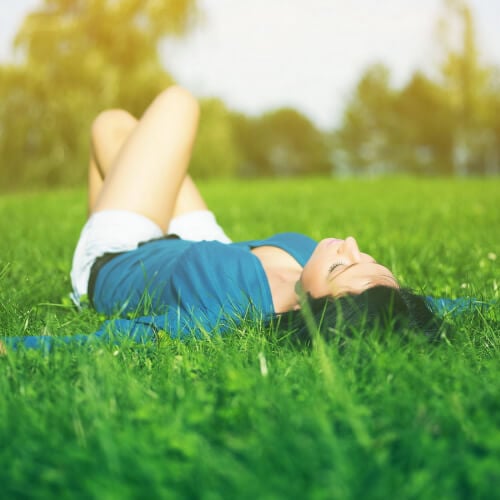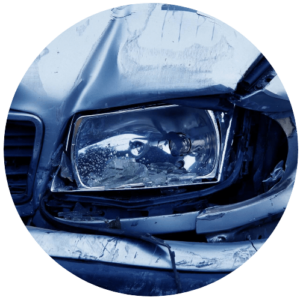EMDR Therapy
Eye Movement Desensitisation & Reprocessing Therapy is the leading evidence based treatment for Post Traumatic Stress Disorder (PTSD). It can also help with other mental health difficulties. Examples include: phobias, tinnitus, eating disorders and addiction.
EMDR does not rely on more traditional talk therapies, or medication but instead uses Rapid Eye Movement (REM) as the basis for treatment. Rapid Eye Movement (REM) is a natural function of the body and occurs when we are in deep sleep. The body uses REM sleep to help it to process daily emotional experiences.
Dr Francine Shapiro, who developed the practice of EMDR therapy in 1989 found that only three 90-minute sessions of EMDR therapy could alleviate symptoms of PTSD in over 77% of the patients that she treated.
What Is EMDR therapy?
EMDR is a somatic psychotherapy which works by way of bilateral stimulation. Bilateral stimulation means stimulation is conducted on each side of the body alternately. Stimulation can include eye movements, handheld buzzers, self tapping, therapist tapping or auditory beats and tones.
EMDR is carried out within a set of strict protocols. These help to encapsulate EMDR into specific stages. Each stage is completed before continuing to the next stage. Amongst these stages is desensitisation whereby a client will revisit a trauma whilst experiencing billateral stimulation. This will enable them to desensitise themselves to the traumatic experience. Another stage is reprocessing a trauma which means processing and attributing a different meaning to it.

EMDR Therapist
Matthew Alderton - MA, BSc, Dip, Dip Psych.
I trained for 7 years at The Centre for Counselling and Psychotherapy to become a counsellor and psychotherapist. I am also a qualified EMDR therapist.
EMDR is the leading evidence based treatment for PTSD. I use it to help people successfully with: PTSD, phobias, addiction, eating disorders and tinnitus. The way EMDR works, helps us to get to the root of the difficulty very quickly and work through it in a focused strategic way. We might say EMDR reaches the parts other therapies can't reach.
I offer EMDR therapy online, in Paddington London and Cuffley Hertfordshire.
What Can EMDR Help With?
Eating Disorder
Processing eating disorder related trauma can help to reduce eating disorder symtoms.
How Can EMDR Therapy Help With PTSD?
When we experience a trauma, we may have difficulty integrating and processing the trauma into our everyday experience. It is the difficulty we have in integrating our experience that results in trauma or PTSD symptoms.
Unprocessed trauma can colour our experience of life and take us away from a point of balance and homeostasis. It could be likened to a splinter in the skin which prevents healing. Once the splinter is removed healing can begin. Trauma processing and desensitisation works in a similar way but instead of removing the trauma we are able to process and integrate our traumatic experience. This means that a person is no longer triggered when they remember it and natural healing can begin.
EMDR therapy identifies and helps us re-process the trauma experience by way of bilateral stimulation. It is this re-processing of the trauma that enables cognitions to become more adaptive and we become desensitised to the traumatic experience. This means that we can look back on a traumatic experience without being re-traumatised by it.

EMDR Therapy Explained
This video explains the journey a person might go on, in relation to experiencing trauma, the nature of trauma and how somatic therapy (including EMDR) has helped them overcome trauma.
Bilateral Movement
EMDR therapy utilises bilateral stimulation. Bilateral stimulation refers to a gentle stimulation of the right and left side of the body alternately. Bilateral stimulation is carried out at different speeds depending on the EMDR therapy phase of treatment.
This can include following a finger, light stick or moving ball. It can also include physical body tapping, auditory beats or bleeps or vibrating buzzers. Or a combination of several forms of billateral stimulation.

EMDR Therapy Benefits
PTSD Symptoms Cessation
EMDR therapy can help to reduce PTSD symptoms in relation to intrusions, flashbacks, negative feelings, triggers and calm the nervous system.
Connection
A trauma or multiple traumas might make you feel like disconnecting from other people and withdraw. You may not feel like yourself. EMDR treatment can help you to reconnect with loved ones and feel like you are back to your old self.
Relaxation
PTSD symptoms might include hyper-arousal where you feel like you are on guard, acting aggressively or have difficulty sleeping or concentrating. EMDR therapy can help restore you back to a place of homeostasis.
Related difficulties
The experience of trauma can cause secondary difficulties like anxiety and depression. Once you have processed your trauma it will help to reduce symptoms from associated difficulties. It can also help progress in relation to other therapies which may not have previously worked.

Client Comments Following EMDR therapy
"I feel like my old self again"
"This therapy has really helped me, I did not have to re-explain my trauma yet again to another therapist"
"I used to feel like the trauma I endured over twenty years ago was still happening to me. I don't feel like that any more"
"I'm feeling relaxed and happy again and wish I had done this therapy years ago"

Contact us
The best way of reaching us is via our contact form at the below link. We look forward to receiving your therapy request.










